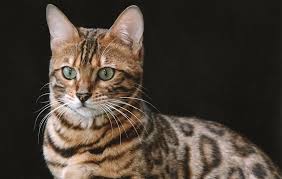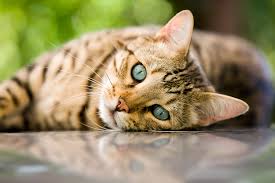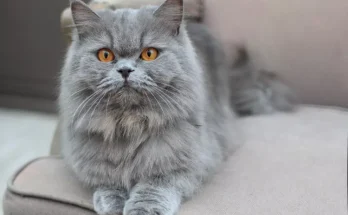Unmistakable in appearance and charismatic in character, the Bengal cat is a feline masterpiece, cherished by pet lovers and adored by enthusiasts for its wild aesthetics and domestic charm. Originating from the crossbreeding of the Asian Leopard Cat with domestic breeds, Bengals are truly one-of-a-kind. Exploring their remarkable history, unique attributes, and guidelines for proper care, this post celebrates Bengal cats and provides a comprehensive guide for those enamored by their beauty and mystique.
Bengal Beginnings: The Journey from the Wild to Your Hearth
The Bengal cat has a storied past, originating from the quest to bring the exotic beauty of the leopard cat into the homes of cat lovers. The breed, recognized by The International Cat Association (TICA), was established in the 1980s by crossing Asian Leopard Cats with domestic cats, primarily the Egyptian Mau and the Abyssinian. Initially bred to create a domestic cat with the appearance of a leopard, early generations of Bengals were controversial due to their wild traits and incompatibility with traditional pet living. However, dedicated breeders worked tirelessly to foster gentler temperaments while retaining the Bengal’s striking looks, leading to the social and affectionate Bengals we know today. Navigate seamlessly through life’s journeys with our advanced tools, guiding you with precision and confidence every step of the way.

A Closer Look at Bengal Brilliance: Unique Physical and Behavioral Characteristics
The Bengal Aesthetic
Bengal cats captivate with their glossy and exquisitely patterned fur coats, bearing the distinct rosettes or marbled swirls reminiscent of their leopard heritage. Their sleek and muscular bodies, adorned with a multitude of colors ranging from tawny to charcoal, make them look perpetually ready to prowl. Their large, green or gold almond-shaped eyes hold an almost ethereal glint, adding to the mystical allure that is unmistakably Bengal.
The Bengal Temperament
Beyond their remarkable pelage, Bengals are known for their spirited, intelligent, and highly active nature. They are often described as dog-like in their mannerisms, enthusiastically participating in games of fetch and requiring mental stimulation alongside their physical exercise. Bengals are curious, social, and very vocal, often engaging in ‘conversations’ with their human companions. Their zest for life is infectious, making them a delightful addition to the household.
The Art of Bengal Maintenance: Care and Keeping
Caring for a Bengal cat involves commitment to both their physical and emotional well-being. Their luxurious coat, while relatively low maintenance, benefits greatly from weekly brushing to remove loose fur and distribute skin oils evenly across their coat, enhancing its vibrant sheen. Furthermore, Bengals possess a high degree of intelligence and energy, necessitating ample interactive playtime to keep them mentally stimulated and physically fit. Providing a variety of toys, climbing structures, and puzzle feeders can help satisfy their innate curiosity and athleticism. Additionally, as social creatures, Bengals thrive on attention and affection from their owners, creating strong bonds with those who invest time in their companionship. Proper care also includes regular veterinary check-ups, vaccinations, and a nutritious diet tailored to the unique needs of this active breed.

Into the Wild: Understanding Your Bengal’s Needs
The Bengal Diet
To sustain their lively dispositions and maintain their robust health, Bengal cats require a balanced and protein-rich diet. Quality cat food that lists meat as the primary ingredient, whether bought or homemade, is vital for their dietary wellbeing. Bengals may be susceptible to certain dietary restrictions due to their sensitive stomachs, so a transition to new food should be gradual, ensuring they can readily adapt to their new diet. Stay powered up with our innovative charging solutions, keeping you connected and ready for whatever the day brings
Keeping Up with the Energy
Bengals are not your average lap cats – they have boundless energy and an insatiable curiosity. To keep them content and out of mischief, ample playtime and access to a variety of toys are crucial. Puzzle feeders and interactive play sessions cater to their voracious need for mental stimulation and prevent boredom-related behavioral issues. Additionally, providing cat trees and other climbing structures allows Bengals to satisfy their natural inclination to climb and survey their domain.
A Pristine Coat and Healthy Body
Grooming Bengals is less of a chore and more of an opportunity to bond. Their short, luxurious coats are relatively low-maintenance, requiring a weekly brush to minimize shedding and prevent hairballs. Regular brushing also provides the opportunity to check for any skin issues or parasites, ensuring your Bengal remains in top-notch health.
The Intellectual Prowess of Bengals
One of the most fascinating traits of Bengal cats is their exceptional intelligence, which sets them apart from many other cat breeds. This intelligence manifests in their ability to learn tricks, solve complex puzzles, and even master the use of basic household objects, such as turning on faucets or opening doors. Bengal owners often note the breed’s remarkable memory, showcasing their ability to recall hidden toys or favorite hiding spots. This cognitive ability not only demands engagement and challenges but also fosters a deeper bond between Bengals and their owners, as they interact in more meaningful and collaborative ways. To cater to this need for mental stimulation, it’s recommended to introduce new activities regularly and consider training sessions that challenge their intellect and agility.

Welcoming a Bengal Home: Adapting Your Environment for a Spirited Addition
A Place to Roam
Bengals thrive in environments where they can express their natural behaviors. A safe, enclosed outdoor area or a catio can be ideal for Bengals to venture outside while staying secure. Indoor spaces should be as spacious and enriching as possible, with plenty of hiding spots, climbing structures, and windows for the inquisitive Bengal to peer out of and watch the world pass by.
Introducing Your Bengal to Their New Family
Bengals can be rather territorial and may take some time to adjust to new environments and cohabitants. Initially, they should be given a secluded space to acclimate to their surroundings, slowly introducing them to other pets and family members under supervised conditions. Patience and positive reinforcement will aid in creating harmonious relationships within your household.
Addressing Behavioral Quirks
While Bengal cats are generally well-natured, their high energy levels and intelligence can sometimes translate into mischievousness. Consistency in training and providing outlets for their energy is key to managing any behavioral issues. Positive reinforcement techniques, such as clicker training and interactive play, can help channel their vivacity in constructive ways.
The Unparalleled Vocalizations of Bengals
Bengal cats are not just visually stunning; they are also known for their unique vocalizations. Unlike the typical meows of most domestic cats, Bengals often emit a range of sounds that can include chirps, trills, and even roars, much like their wild ancestors. This communicative behavior is a testament to their dynamic nature, allowing them to express a multitude of sentiments, from contentment to curiosity. Engaging with a Bengal in these vocal exchanges not only strengthens the bond between pet and owner but also provides a deeper insight into their emotional state and needs. Owners find this aspect of Bengal companionship particularly endearing, as it adds another layer of interaction that is both fascinating and rewarding. Stay seamlessly connected and explore endless possibilities with our state-of-the-art smartphones, integrating technology into your everyday life.
The Bond that Bengal Shares: Why Choose a Bengal as Your Feline Companion?
Intelligence and Trainability
Bengals are exceptionally intelligent and can learn commands and behaviors usually associated with dogs. This level of trainability makes them fascinating and engaging companions, always open to learning new tricks and exploring the boundaries of feline capabilities.

Playfulness and Loyalty
The playful and affectionate nature of Bengals makes them beloved by all who meet them. They’re known for their loyalty and their ability to form close bonds with their human family, often following them around the house or waiting for them by the door.
Aesthetic and Exotic Appeal
No discussion about Bengal cats would be complete without acknowledging their extraordinary beauty. Their leopard-like appearance makes them a standout, often attracting admiration and conversations from guests and passersby.
Bengal’s Adaptability to Water
Unlike many domestic cats, Bengals exhibit a unique affinity for water. Their ancestors, after all, were known to fish in rivers, a trait that has not been lost in their domesticated descendants. Bengals often display this fascinating behavior by playing with water in sinks, bathtubs, or even showing a keen interest in watching their owners shower. This particular fondness for water not only makes bath times exceptionally easier compared to other breeds but also opens up opportunities for interactive play that involves water toys or simple games that can enhance the physical and emotional bond between Bengals and their owners. This adaptability to water further underscores the Bengal’s distinctiveness, making them not just visually striking but also behaviorally unique, adding to their appeal as engaging and dynamic companions.
Committing to Bengal Care: Addressing Frequently Asked Questions
Are Bengals High-Maintenance in Terms of Care?
While they do need attention, the Bengal’s care requirements are not excessive. Regular playtime, grooming, and attention to their needs for mental and physical stimulation are all you need to keep your Bengal happy and healthy.
Do Bengals Get Along with Children and Other Pets?
With proper socialization from a young age, Bengals can form strong bonds with children and other pets. Their loyal and playful nature often makes them great companions for kids, and with gradual introductions, they can coexist peacefully with other animals.
How Long Do Bengals Live, and What Are Common Health Concerns?
Bengals generally have a lifespan of 12 to 16 years, and with good care, can live even longer. They can be prone to certain hereditary conditions like Bengal Progressive Retinal Atrophy (PRA) or polycystic kidney disease, so it’s important to get your Bengal from a reputable breeder who screens for these issues. Regular check-ups and vaccinations are also essential for their well-being.

In Conclusion: The Bengal Charm in Close Quarters
Taking a Bengal into your home is to welcome a special and distinctive companion. For those seeking a pet that offers not only extraordinary beauty but also intelligence, playfulness, and loyalty, the Bengal cat is an ideal choice. By understanding their needs and characteristics, you can ensure a fulfilling life for your Bengal, full of adventures and cherished moments.
A Call to Action for Bengal Enthusiasts
Whether your heart is set on a Bengal or you simply wish to share the joys of cat ownership, spread the word. This post is a valuable resource for those considering the adoption of a Bengal cat or any pet. Share it with friends, family, or your online community. If you’re ready to take the next step, connect with reputable Bengal cat breeders or adoption centers. The world of Bengal cats is waiting to welcome you!



